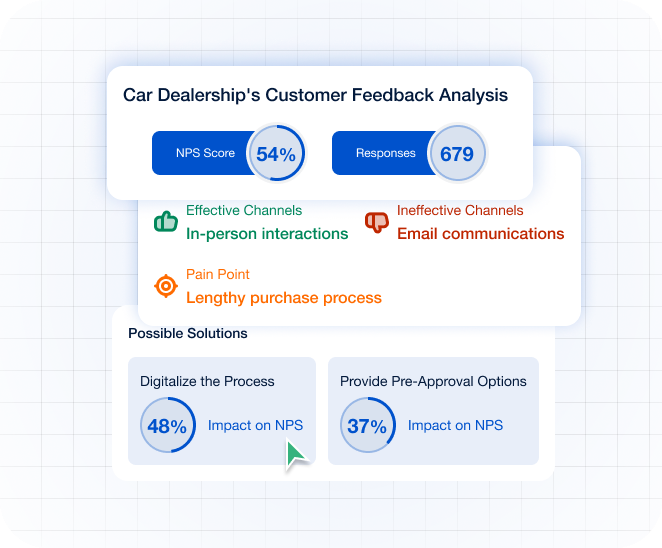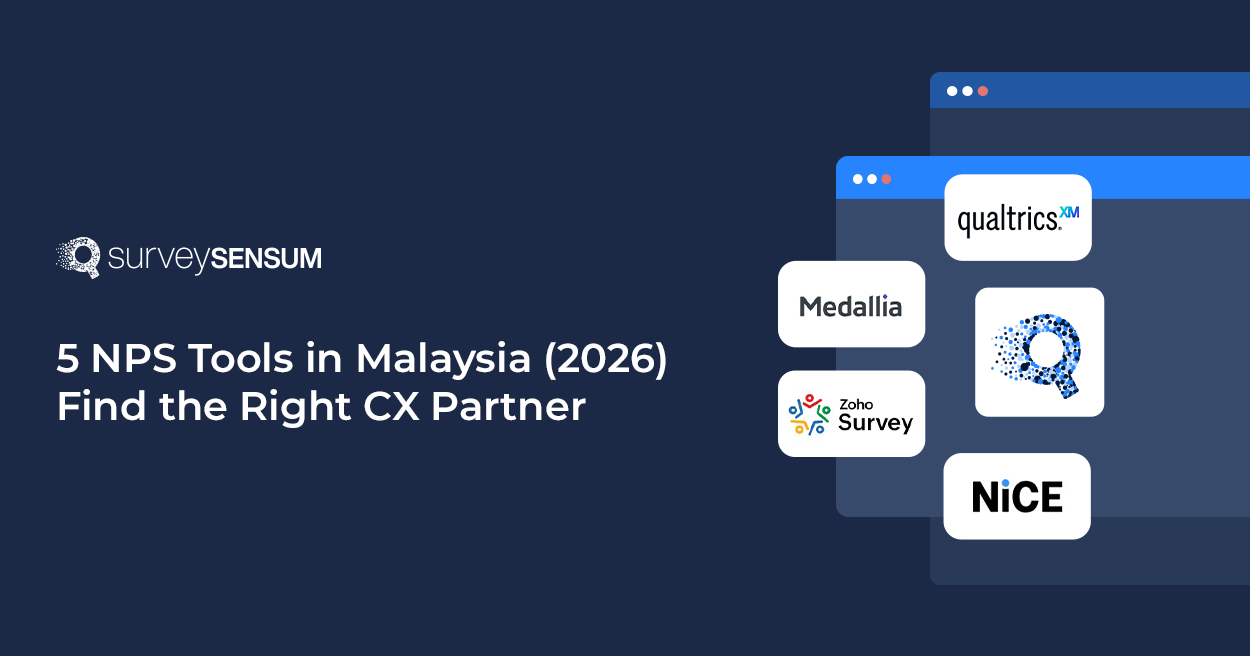

Running a large enterprise is tough enough, with multiple products, a worldwide presence, and diverse customers. And when customer feedback influx from multiple channels, it becomes a true nightmare.
This is where Enterprise Feedback Management comes in, enabling businesses to streamline feedback collection, management, and analysis from multiple channels across different touchpoints in the customer journey.
So, let’s understand the importance and workings of an enterprise feedback management system to lower the risk of losing valuable customer insights.
What Is an Enterprise Feedback Management System?
An enterprise feedback management system is designed to gather, organize, and analyze feedback from multiple sources into a single platform, enabling businesses to take data-driven action based on the gathered data. The system centralizes feedback from different channels like email, social media reviews, etc, allowing organizations to gain a unified view of sentiments and experiences.
An enterprise feedback management system is specifically designed to handle the complexities, offering advanced features like automated feedback collection, real-time analytics, and integration with other business tools such as CRM and customer support platforms.
But, Do You Really Need an Enterprise Feedback Management System?
In order to stay ahead of the competition and lower the risk of missing out on valuable customer insights, enterprise-level organizations need robust enterprise feedback management software, which also plays a key role in brand reputation management. Let’s understand this in detail.
1. Customer Retention and Loyalty: Continuous gathering of feedback and proper action on the feedback will show your customers that their opinions matter, leading to strong customer loyalty and a higher retention rate.
2. Centralized Feedback System: An EFM system will enable you to take relevant and data-driven action by enabling you to gather feedback from every source possible. And not just collect but also organize and manage them to gain a holistic understanding of different aspects of your business on a single platform.
3. Actionable and Data-Driven Insights: With an EFM system, you can automate the process of managing and analyzing thousands of feedback to extract actionable insights. This automation will not only help you save time but will also eliminate the risk of human error.
4. Close the Feedback Loop: An enterprise feedback management system will provide real-time alerts and notifications when you receive negative feedback or review, enabling you to respond to issues in a timely manner and close the feedback loop in real-time.
5. No More Data Silos: A robust EFM system can be integrated with your existing tools like CRM systems, marketing automation tools, etc, ensuring data is shared across departments and fostering collaboration across departments towards a common goal.
Understanding the importance of enterprise feedback management software is the first step, the next is to create a streamlined system to implement it correctly. Let’s see how to do that.
How Do You Implement Enterprise Feedback Management System?
Creating a streamlined enterprise feedback management system requires proper gathering, managing, analyzing, and acting on feedback. Let’s understand this in detail.
1. Setting Up the Right Feedback Channels
Gathering feedback from random channels at random touchpoints won’t give you the right data required for relevant action. So, before rushing out to gather feedback, let’s configure the channels through which you need to gather feedback.
- Identify Key Touchpoints: Identify the moments in the customer journey where feedback will be most valuable, such as after purchases, customer service interactions, or after using a new product feature.
- Configure Feedback Channels: Configure the system to capture feedback across all your customer touchpoints. This includes website surveys, in-app surveys, social media monitoring, live chat, and email surveys.
- Omnichannel Strategy: Create an omnichannel feedback strategy, ensuring that feedback can be captured from every interaction, no matter where it occurs. This ensures a holistic view of all aspects of customer experience.
2. Collecting Feedback
Customer shopping journeys are spread across multiple channels, and as many as 85% start their purchasing workflow start on one device yet finish it on another – Google
This shows that customers are no longer confining themselves to one platform and even switching between multiple platforms to finish a single transaction, depending on their convenience – making it crucial to gather feedback across multiple platforms in order to gain a holistic view.
This is why businesses need to adapt to an omnichannel strategy when it comes to gathering customer feedback and consolidating them into one single centralized platform. This provides businesses with a single source of customer data and insights, helping them to maintain a holistic view of customer sentiment.
Creating an omnichannel feedback strategy not only helps in streamling data but also impacts revenue growth. In fact, companies that engage with customers across multiple channels report a 9.5% year-over-year increase in annual revenue, compared to 3,4% for weak omnichannel companies.
3. Analyzing Feedback
Gathering feedback across channels and at key touchpoints needs to be transformed into a data-driven action plan in order to improve customer experience.
- Data Segmentation: Use the EFM system to segment feedback by customer demographics, product lines, departments, or regions, making it easier to identify trends specific to certain customer groups or areas of the business, and to perform liveness detection on customer interactions.
For example, a global retailer brand discovers that customers from North America are facing delivery issues while customers from Asian countries are reporting product quality issues. This segmentation will allow the company to take targeted action.
Text and Sentiment Analysis: EFM systems offer NLP and AI capabilities that allow for the analysis of qualitative feedback. Text analysis software helps identify the tone and emotions behind open-ended feedback, while keyword extraction can highlight frequently mentioned issues or suggestions.

- Identifying Trends and Patterns: By tracking feedback over time, EFM systems can help identify emerging trends – whether it’s declining satisfaction with a product feature or increasing employee engagement. These patterns can guide strategic decisions.

4. Taking Action
73% of customers will switch to a competitor after multiple bad experiences and that’s the cost of not taking proper action on customer feedback, making it all the more crucial to take relevant action on the actionable insights.
Prioritize Feedback: Create workflows within the system to assign and prioritize feedback based on urgency or business impact. For example, feedback related to a major product issue might be escalated immediately, while more routine suggestions could be routed to the product development team.

- Cross-Departmental Collaboration: Ensure that relevant teams—such as product, marketing, customer support, etc have access to the feedback that pertains to their areas. This collaboration ensures that feedback is acted upon quickly and effectively.
- Close the Feedback Loop: Closing the feedback loop completes your feedback management process. It involves responding to customers after taking action on their input. Letting them know that their feedback was heard, addressed, and led to improvements builds trust and strengthens relationships.
Conclusion
Implementing an enterprise feedback management system into your current workflow is not a one-time endeavor – rather it is a continuous process that enables businesses to close the feedback loop, increase engagement, and foster a culture of continuous improvement. However, implementing this strategic approach requires a robust tool like SurveySensum, that ensures a streamlined process of gathering, managing, and analyzing feedback to make data-driven, relevant, and prioritized decisions.

















